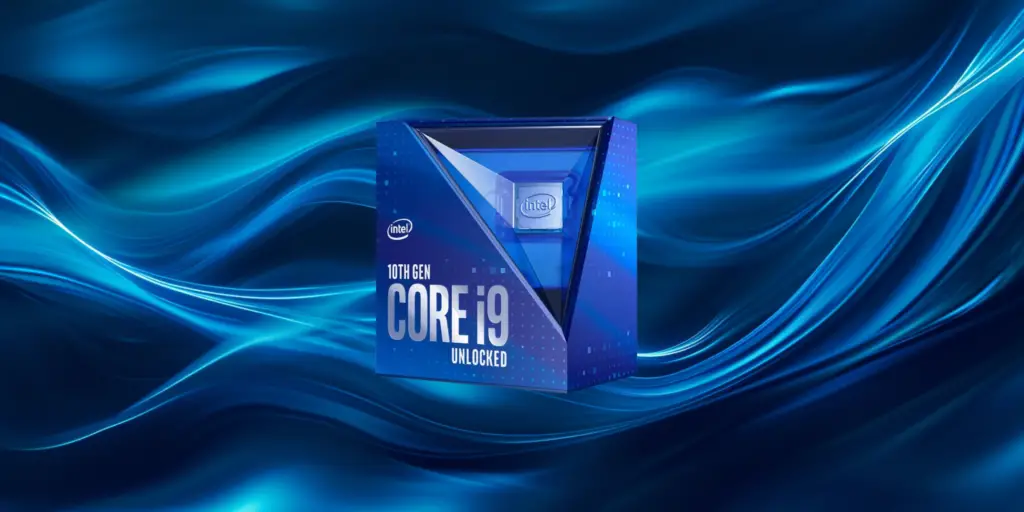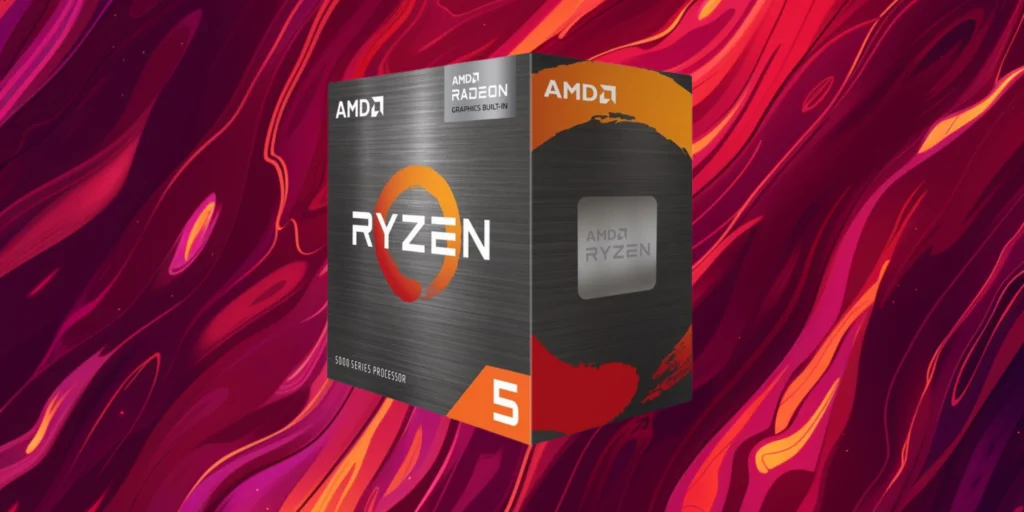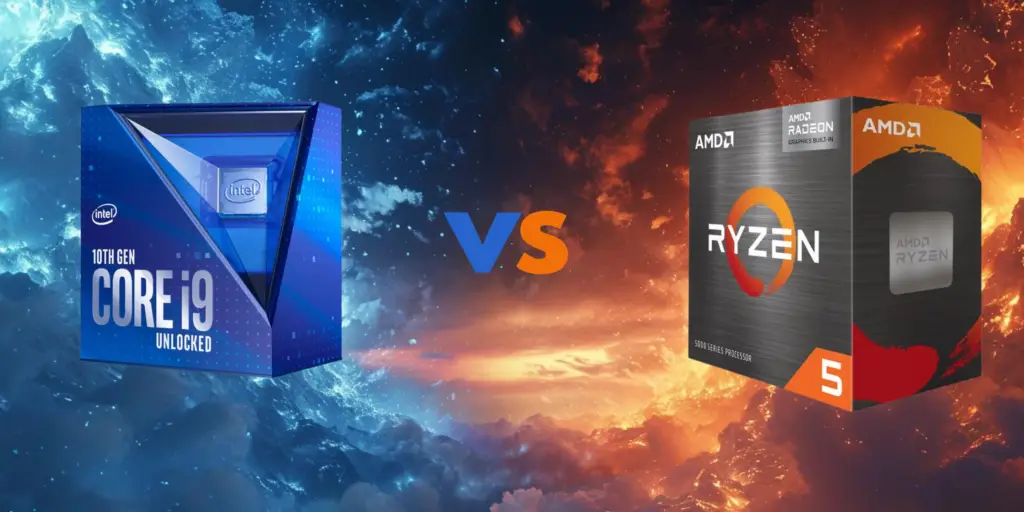Desktop computing, the central processing unit remains the heart that powers every task, game, and application. As we navigate through 2024, the rivalry between AMD and Intel—the two titans of the CPU market—has reached unprecedented levels of intensity.
This competition has not only propelled technological innovation forward but has also left consumers with a more challenging decision than ever: Which CPU should power their PC?
Intel held a commanding lead in the consumer CPU space, with AMD often viewed as a secondary option. The narrative began to shift dramatically in 2017 with the launch of AMD’s Ryzen CPUs, which introduced high core counts, enhanced performance, and more competitive pricing.
This shift not only redefined the AMD versus Intel debate but also revitalized the entire CPU industry, fostering a new era of competition and innovation.
Today, with AMD’s Ryzen 7000 series and Intel’s 14th Generation CPUs leading their respective charge, the choice between AMD and Intel is more complex and nuanced than ever. Each offers unique advantages, whether it be in terms of raw performance, power efficiency, or future-proofing capabilities.
This intensifying competition has not only benefitted tech enthusiasts and hardcore gamers but has also positively impacted average consumers by providing more powerful and cost-effective computing options.
In this intricate battlefield of silicon and circuits, making an informed decision requires a deep dive into what each company offers in 2024. Through a comprehensive analysis of the current CPU market, this guide aims to shed light on the strengths and weaknesses of AMD and Intel, offering specific recommendations for every budget and use case.
Whether you’re building a high-end gaming rig, a budget-friendly PC for everyday tasks, or a powerhouse for productivity, understanding the landscape of AMD vs Intel in 2024 is crucial for choosing the right CPU to power your digital experiences.
AMD and Intel The 2024 Showdown
The CPU market in 2024 presents an intriguing showdown between AMD and Intel, with both companies fiercely vying for supremacy across various segments. This year marks a significant phase in their long-standing rivalry, characterized by technological leaps, strategic releases, and targeted advancements that cater to a wide range of consumer needs.
Here’s a closer look at the state of play between AMD and Intel in 2024, focusing on their latest desktop CPU offerings: AMD’s Ryzen 7000 series and Intel’s 14th-gen processors.
AMD’s Ryzen 7000 series, leveraging the new Zen 4 architecture, marks a significant milestone for the company. Built on TSMC’s 5nm process, these chips offer improved performance and energy efficiency.
The Ryzen 7000 series ranges up to 16 cores and 32 threads, with clock speeds reaching up to 5.7GHz. Notably, AMD has made a decisive shift to DDR5 memory and PCIe 5.0, indicating a strong focus on future-proofing and high-performance standards.
One of the standout features of the Ryzen 7000 series is its embrace of the AM5 platform, which promises longevity and compatibility with future AMD processors.
This move mirrors AMD’s consumer-friendly approach, allowing users to upgrade their CPUs without changing their motherboards, a flexibility that has been highly appreciated in the enthusiast community.
Intel’s response to AMD’s advancements comes in the form of its 14th Gen series, also known as “Intel 4,” utilizing a 7nm process. These processors boast up to 24 cores and 32 threads, with peak clock speeds reaching an impressive 6GHz.
Intel has taken a dual approach to memory support, offering compatibility with both DDR4 and DDR5, along with PCIe 4.0 and PCIe 5.0 support, catering to a broad spectrum of user preferences and system requirements.
The 14th Gen processors continue Intel’s hybrid architecture strategy, combining Performance (P) and Efficient (E) cores to optimize both power and performance.
This approach has proven effective in balancing high-intensity computing tasks with energy efficiency, making these chips highly versatile for both gaming and productivity applications.
In the performance arena, Intel’s 13th Gen processors initially recaptured the crown in both gaming and productivity. AMD’s latest offerings are closely matched, often coming within striking distance in various benchmarks.
The introduction of AMD’s X3D lineup, featuring 3D V-Cache technology, has further intensified the competition, especially in gaming performance.
On the features front, both AMD and Intel have made significant strides. AMD’s exclusive focus on DDR5 and PCIe 5.0 with its Ryzen 7000 series positions it as a forward-thinking choice for enthusiasts seeking the latest in high-speed memory and storage technologies.
Conversely, Intel’s flexible approach to memory support and its hybrid core architecture offer a versatile solution that caters to a wider audience, balancing cutting-edge performance with backward compatibility and energy efficiency.

AMD’s Zen 4 and Ryzen 7000 Series
The Zen 4 architecture represents AMD’s latest technological leap, built on TSMC’s advanced 5nm process technology. This new architecture delivers significant improvements in performance per watt, a crucial metric for both power efficiency and raw computing power.
With up to 16 cores and 32 threads, the Zen 4 CPUs push the boundaries of what’s possible on desktop platforms, offering enthusiasts and professionals alike unparalleled multi-threaded performance.
One of the most significant upgrades with Zen 4 is the increased IPC (Instructions Per Cycle), which enhances the overall efficiency and speed of the processors.
Coupled with higher clock speeds peaking at 5.7GHz, the Ryzen 7000 series chips are designed to handle everything from intense gaming sessions to demanding creative workflows with ease.
The Ryzen 7000 lineup is diverse, catering to a broad spectrum of users. At the top of the range, the Ryzen 9 7950X3D and Ryzen 9 7950X offer the highest core and thread counts, making them ideal for high-end gaming, content creation, and multitasking.
The mid-range options, like the Ryzen 7 7800X3D and Ryzen 7 7700X, provide a balanced mix of performance and price, suitable for mainstream users and enthusiasts. The Ryzen 5 7600X, as an entry-level option, offers excellent value for gamers and general users, delivering high performance at a more accessible price point.
In terms of pricing, AMD has strategically positioned the Ryzen 7000 series to compete across various market segments. For example, the Ryzen 9 7950X3D is priced at $600, offering a compelling option for users seeking the pinnacle of gaming and creative performance.
At the lower end, the Ryzen 5 7600X at $229 makes next-gen performance attainable for a broader audience. A key aspect of AMD’s strategy with the Ryzen 7000 series is its focus on future-proofing.
The new processors are exclusively compatible with the AM5 platform, which supports DDR5 memory and PCIe 5.0. This move ensures that Ryzen 7000 users can take full advantage of the latest advancements in RAM and storage technologies. This offers a pathway to significant performance gains in the coming years.
AM5 platform is designed to offer longevity and compatibility with future AMD processors, echoing the company’s consumer-friendly approach seen with the AM4 platform. This commitment to platform stability and upgradeability is a significant advantage for consumers, reducing the need for frequent and costly motherboard upgrades.

Intel’s Response: The 14th Generation
Intel’s 14th Gen processors are built on the “Intel 4” process, a 7nm manufacturing technology that marks a significant step forward in efficiency and performance. This new process enables higher transistor density, reduced power consumption, and increased performance compared to previous generations.
With up to 24 cores and 32 threads, the top-end models of the 14th Gen lineup are designed to meet the demands of the most power-intensive applications, offering a potent mix of high-performance P-cores and efficient E-cores.
One of the hallmarks of Intel’s recent generations, including the 14th Gen, is the hybrid architecture. This design philosophy combines high-performance cores with efficiency-optimized cores within the same processor.
This arrangement allows for more nuanced power management, enabling the CPU to adapt dynamically to different types of workloads, optimizing for either performance or energy efficiency as needed.
The hybrid architecture has proven particularly effective in scenarios where a mix of single-threaded and multi-threaded performance is required, such as in gaming and mixed-use productivity applications.
- The 14th Gen series offers a diverse range of processors, from the high-end Core i9-14900K to the more budget-friendly Core i3 models. These processors boast impressive specifications, including:
- Up to 6GHz boost clock speeds, ensuring top-tier single-threaded performance.
- Support for both DDR4 and DDR5 memory, giving users the flexibility to choose based on their budget and performance needs.
- PCIe 4.0 and PCIe 5.0 support readying systems for the latest high-speed storage and graphics cards.
- Enhanced onboard graphics with the Intel UHD 770, providing decent graphical performance for basic tasks and light gaming without the need for a discrete GPU.
Intel has positioned its 14th Gen processors competitively, with pricing that reflects a commitment to capturing a broad market segment, from enthusiasts to budget-conscious consumers. The flagship Core i9-14900K is priced to compete directly with AMD’s top offerings.
While the entry-level Core i3 models provide an accessible entry point into next-generation computing performance.
Category-wise Recommendations
When navigating the CPU market in 2024, the wealth of options from AMD and Intel can be overwhelming.
For those for whom budget is no barrier and the pursuit is for the ultimate in desktop computing performance, the battle is tightly contested between Intel’s Core i9-14900K and AMD’s Ryzen 9 7950X.
- Intel Core i9-14900K Slightly edges out in gaming and high-intensity productivity tasks thanks to its peak clock speeds and hybrid architecture. It’s the go-to for users who demand the absolute best performance, regardless of power consumption or heat output.
- AMD Ryzen 9 7950X Offers a compelling mix of high performance, efficiency, and future-proofing, thanks to its support for DDR5 and PCIe 5.0 on the AM5 platform. It’s an excellent choice for users who value a cooler operation and a clear upgrade path.
Best Gaming CPU
Gaming often benefits from high clock speeds and efficient core utilization. Here, AMD’s Ryzen 7 7800X3D stands out for its unparalleled performance.
AMD Ryzen 7 7800X3D Dominates the gaming category with its 3D V-Cache technology, providing significant frame rate boosts in most games. It’s unmatched by any offering from Intel or even AMD’s own higher-tier CPUs in gaming scenarios.
Best Budget CPU
Budget CPUs strike a balance between price and performance, suitable for everyday tasks, light gaming, and productivity.
AMD Ryzen 5 7600 Offers excellent performance at a lower price point. Its slightly lower clock speeds compared to the 7600X variant don’t significantly impact gaming or everyday performance, making it an excellent choice for budget builds.
Intel Core i5-14400 A strong contender in multi-core workloads, providing solid performance for users who prioritize productivity tasks alongside gaming. It stands as a competitive option, particularly when considering Intel’s integrated graphics for builds without discrete GPUs.
Best APU (Accelerated Processing Unit)
For those building on a tight budget or looking for a compact system without a discrete GPU, APUs offer integrated graphics capable of handling light gaming and multimedia tasks.
AMD Ryzen 5 8600G Represents the best of AMD’s APU lineup, with decent gaming performance and strong CPU capabilities on the Zen 4 architecture. It’s ideal for entry-level gaming and general computing without the need for an external graphics card.
Best High-End Desktop (HEDT) CPU
In the realm of workstations and tasks that demand an extreme number of cores and threads, such as video editing, 3D rendering, and scientific simulations, AMD’s Threadripper lineup reigns supreme.
AMD Ryzen Threadripper 7960X With its massive core and thread count, high boost clocks, and support for quad-channel DDR5 RAM, it’s unmatched for professional workloads that can leverage its immense parallel processing power.
The Future of CPUs
Intel is expected to make a significant shift with its next-generation Arrow Lake processors. These CPUs are rumoured to introduce a new socket.
Moving away from the LGA 1700 and potentially phasing out DDR4 memory support in favour of DDR5 exclusively, signalling Intel’s commitment to pushing the envelope on memory speed and bandwidth.
Arrow Lake aims to further refine Intel’s hybrid architecture, potentially integrating higher performance cores and more efficient energy management alongside improvements in integrated graphics performance.
This evolution underscores Intel’s strategy to meet diverse computing needs, from high-end gaming and content creation to efficient, everyday computing.
AMD is not standing still, with the Zen 5 architecture on the horizon. While details are still emerging, Zen 5 is expected to bring significant improvements in IPC (Instructions Per Cycle), making for faster and more efficient processors even without substantial increases in clock speed.
This architecture will likely continue AMD’s tradition of offering high core and thread counts, further enhancing multi-threaded performance.
Zen 5 could also introduce new features and technologies, such as advanced AI processing capabilities and further enhancements to energy efficiency, keeping AMD competitive in both desktop and laptop markets.
Both AMD and Intel are likely to integrate more advanced AI and machine learning capabilities directly into their CPUs.
This move will cater to the growing demand for AI-driven applications, from content creation tools that use AI for editing and rendering to gaming features like AI-based upscaling techniques. These capabilities could significantly enhance performance and functionality in software that can leverage AI acceleration.
The future of CPUs also hinges on the broader ecosystem, including advancements in RAM, storage, and input/output technologies.
PCIe 6.0 is on the horizon, promising to double the bandwidth over PCIe 5.0, which will benefit everything from graphics cards to NVMe SSDs. Similarly, as DDR5 matures and becomes more widespread, we’ll likely see further increases in memory speeds and efficiencies, complementing the advances in CPU technology.
As computing power increases, so does the focus on energy efficiency and sustainability. Future CPUs are expected to deliver not only higher performance but do so with lower power consumption.
This trend is crucial for reducing the environmental impact of technology, as well as for making high-performance computing more accessible and cost-effective by lowering the total cost of ownership.

Final Thoughts
The dynamic landscape of CPUs in 2024 and looking towards the future, it’s evident that the rivalry between AMD and Intel has propelled the industry into a new era of innovation, performance, and efficiency.
This competition has significantly benefited consumers, offering a wider range of options tailored to virtually every need and budget.
Whether it’s the cutting-edge performance of enthusiast-grade CPUs, the balanced power of mid-range chips, the accessibility of budget processors, or the specialized capabilities of APUs and HEDT systems, there’s never been a better time to build or upgrade a PC.
The forthcoming advancements from both AMD and Intel promise to push the boundaries further, with next-generation architectures like Intel’s Arrow Lake and AMD’s Zen 5 poised to redefine what we expect from desktop and laptop computing.
The integration of AI and machine learning, alongside improvements in energy efficiency and support for evolving ecosystems, will undoubtedly open new possibilities for users and developers alike.
In this golden age of computing, the choice between AMD and Intel is less about brand loyalty and more about aligning with your specific needs, preferences, and budget. As we anticipate the future developments in CPU technology.
TheIt’s focus will increasingly shift towards creating processors that are not only faster and more powerful but also smarter and more efficient. This evolution will enable new applications, enhance user experiences, and, perhaps most importantly, make high-performance computing more accessible to everyone.
The journey through the CPU landscape of 2024 and beyond is an exciting prospect for tech enthusiasts, gamers, content creators, and everyday users.
With AMD and Intel driving innovation at a rapid pace, the future of computing looks brighter than ever, promising to deliver technologies that transform how we work, play, and interact with the digital world.


